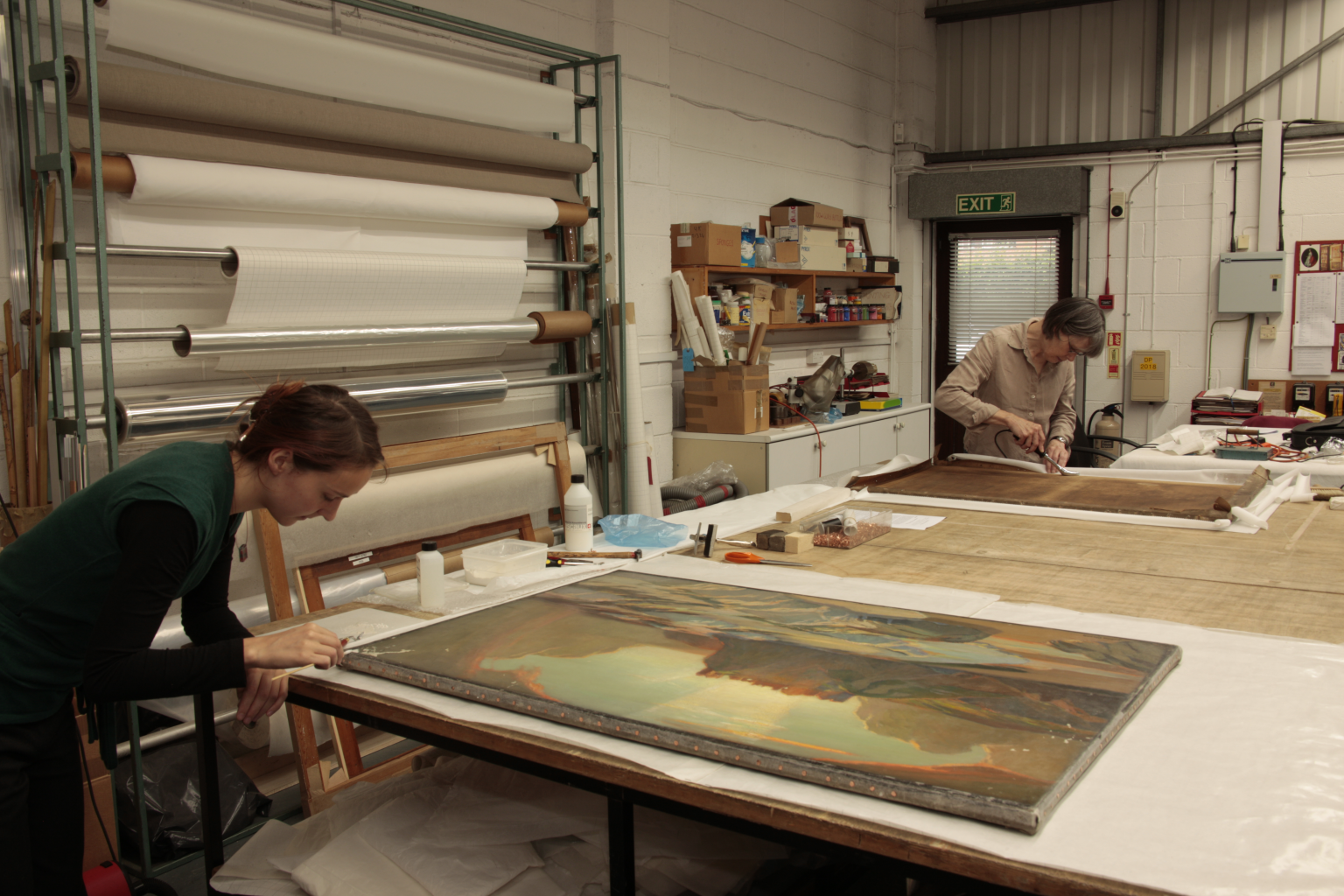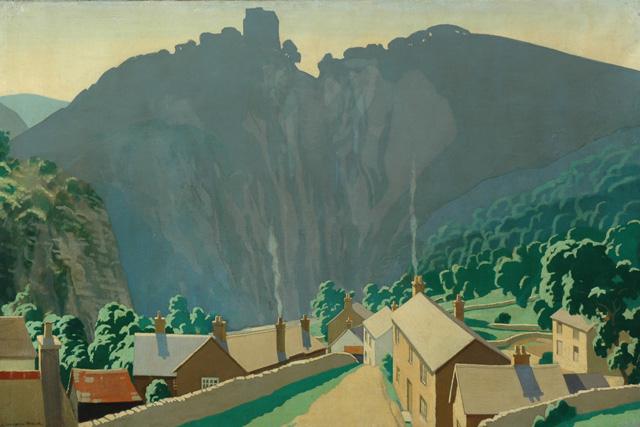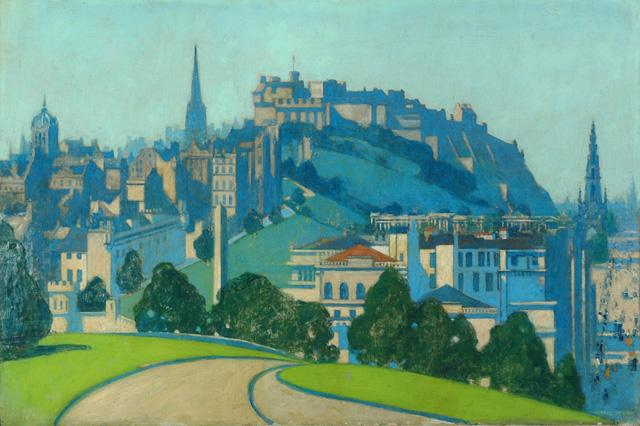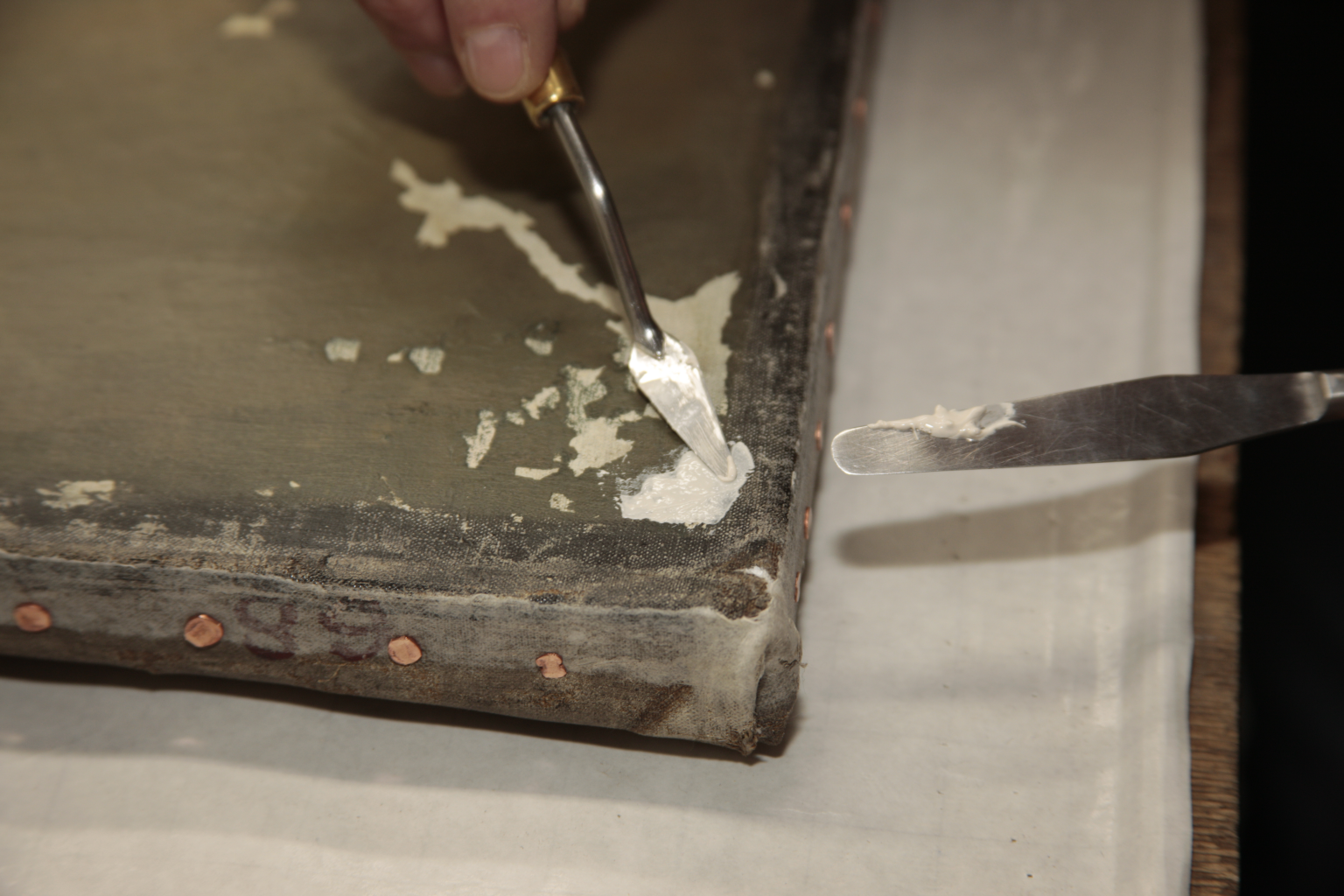Gillian Walker and her team are working on three paintings for us so that we can include them in the forthcoming exhibition, The Art of Advertising. The works required a range of measures from cleaning (general dirt and well as old yellowing varnish, originally used to protect the paint surface) to relining (to give extra support to a degraded and fragile canvas) to infilling of paint losses. It was a fascinating morning watching the conservators at work and quizzing them about how it all happens. My colleague Lynn took plenty of photographs of the conservation, and here are a few of them.

Peveril Castle by Leonard Campbell Taylor

This painting was dirty and the varnish had yellowed with age. The wooden stretcher to which the canvas was attached was distorted and the canvas had become slack.
Treatment: the stretcher around which the canvas is wrapped has been cleaned and polished. The old keys (small triangular pieces of wood which fit into the inner corners of the stretcher to keep it correctly aligned) have been removed. The reverse of the canvas is cleaned with a conservation vac and a smoke sponge as shown below. Once this has been done new keys are fitted and tied into place.


This painting had extremely discoloured varnish as well as many years of dirt and dust which obscured the original paint colours and gave a grubby yellow appearance. Gillian and her team have done the cleaning in three stages for us (see below). On the left the area is as it was, with both dirt and varnish present. The central section has had the dirt removed but the varnish remains. The right hand side has been surface cleaned and the varnish removed, with striking results revealing the bright blue original colour. Once the dirt and varnish have been completely removed, the painting will be given a new coat of clear varnish to protect the paint surface.

Edinburgh by George Henry

There were two tears in the canvas that had been historically repaired with two bulky patches which needed replacing. The stretcher was unstable and distorted and the canvas had become slack over time. There were beginning to be some areas of paint loss. The edges of the canvas had become brittle.
Treatment: The edges of the canvas were in a poor state and needed reinforcing. Gillian has removed the painting from its stretcher and strip lined it. This is the process of adding strips of a light-weight polyester fabric to the edges of the canvas in order to reinforce it and allow it to be safely reattached to the stretcher. The strips are attached with a heat activated synthetic resin and the process is reversible.

The stretcher has been refurbished in preparation for the canvas to be reattached. The stretcher had shrunk with age and the canvas had slackened. The stretcher has therefore been extended on two sides to provide a better fit for the canvas and provide better support. This will stop the canvas sagging. A loose linen lining will also be added to the stretcher to give further support to the canvas.

The reverse of the canvas has had two old bulky patches removed where the canvas had been torn and these have been replaced with new fine polyester non-woven fabric which is much lighter. Over time the old bulky patches can become visible on the front of the painting.

Northern Ireland, Dunluce Castle by Julius Olsson

The canvas was very slack and distorted causing creasing and paint loss to the top of the painting. The painting needed removing from its canvas so that the stretcher could be refurbished and the canvas reinforced. The areas of paint loss will be infilled and retouched.
Treatment: Gillian has lined the inside edges of the canvas – strip-lining – to give it extra support. The stretcher has been cleaned and polished and lined with a piece of linen ready for the painting to be reattached. The extra linen lining which will sit underneath the painting gives the fragile canvas support. The painting is replaced onto its stretcher using copper tacks (the use of copper ensures that they wont rust). Gillian replaces the keys with new ones and they are attached to the stretcher to stop them from falling out.

Once all of the structural work is complete, the paint losses, which are numerous in this painting, are infilled using a chalk based filler and a pallet knife. The fillings will later be retouched with powder pigments ground in a synthetic resin. The painting will be sprayed with a varnish of synthetic resin to protect the paint layer and enhance the colours.

Thanks to Gillian and Lucy for allowing us to photograph their work, and for providing details of the conservation processes described here.